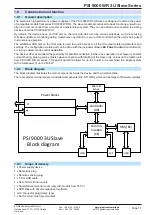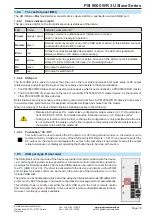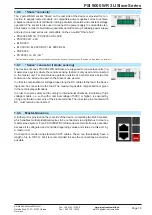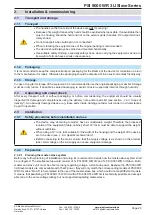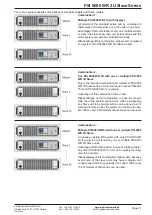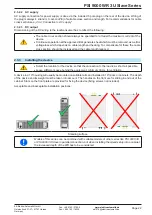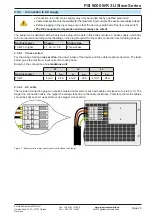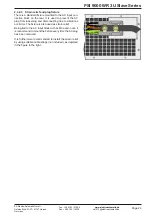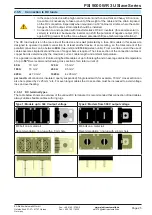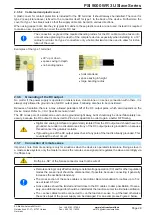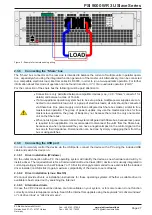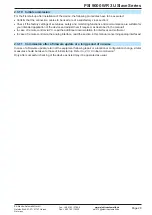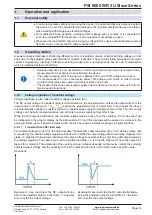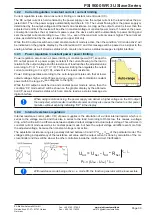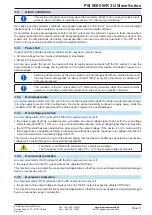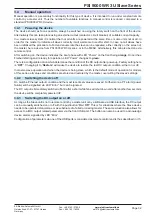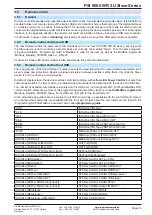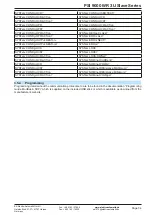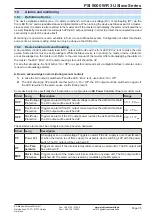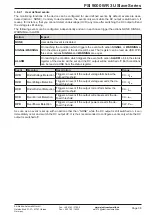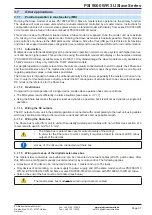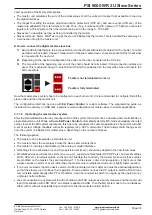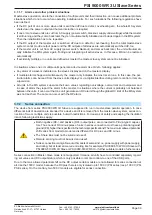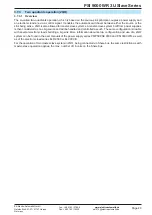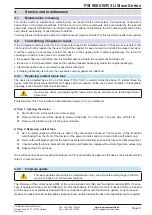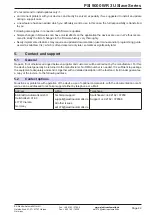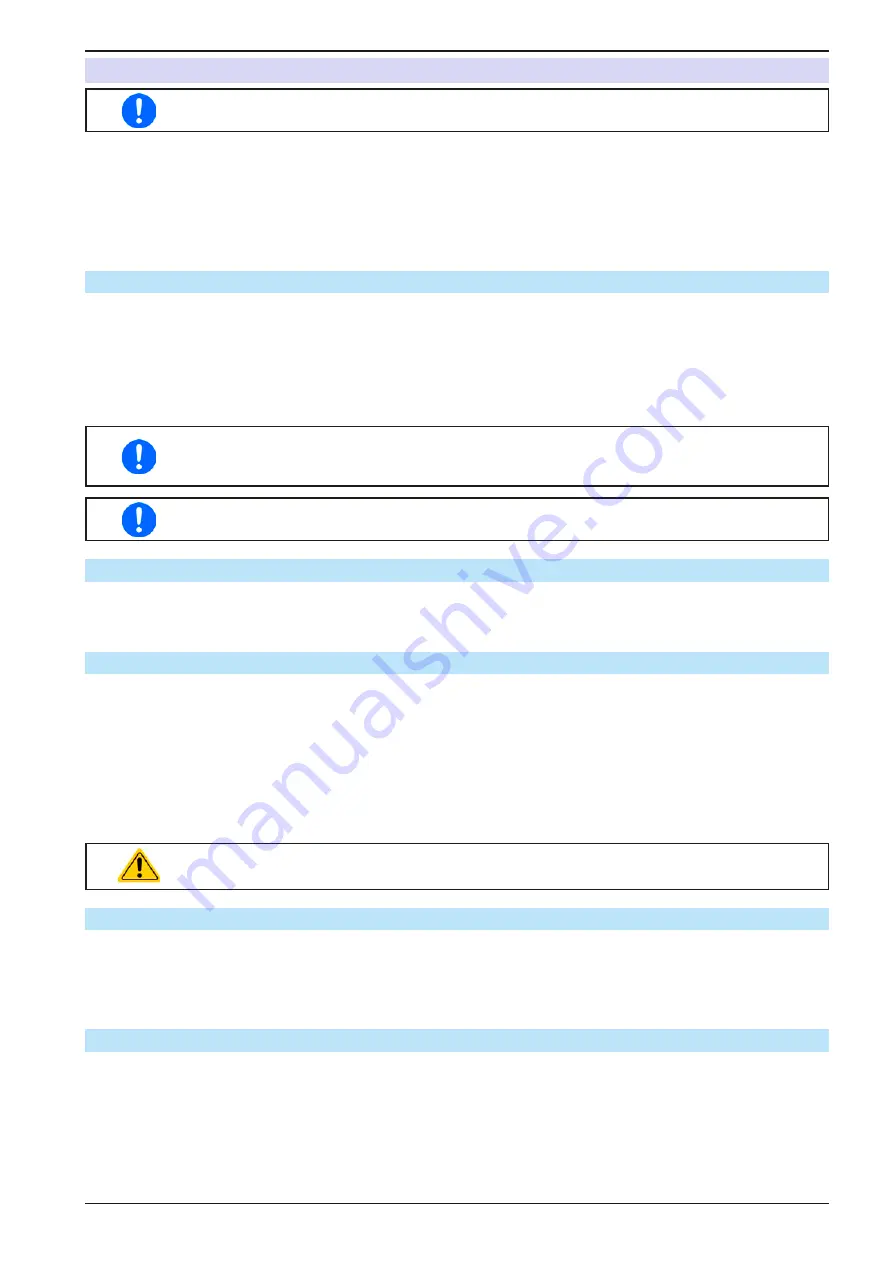
Page 31
EA Elektro-Automatik GmbH
Helmholtzstr. 31-37 • 41747 Viersen
Germany
Fon: +49 2162 / 3785-0
Fax: +49 2162 / 16230
www.elektroautomatik.de
ea1974@elektroautomatik.de
PSI 9000 WR 3U Slave Series
3.3
Alarm conditions
This section only gives an overview about device alarms. What to do in case your device indi-
cates an alarm condition is described in section „3.6. Alarms and monitoring“.
As a basic principle, all alarm conditions are signalled optically (by LED “Error” on the front) and via the digital
interface ports. For later acquisition, an alarm counter can be read via digital interface.
Some alarms require acknowledgement before the DC output can be switched on again, in those cases where
the alarm caused the DC output to switch off. Acknowledgement in normal master-slave operation is done on the
master unit. In other situations, like during manual operation it can be done with the pushbutton “On / Off” on the
front or else by sending a specific command via digital interface.
3.3.1 Power Fail
Power Fail (PF) indicates an alarm condition which may have various causes:
•
AC input voltage too low (mains undervoltage, mains failure)
•
Defect in the input circuit (PFC)
As soon as a power fail occurs, the device will stop to supply power and switch off the DC output. In case the
power fail was an undervoltage and is gone later on, the alarm will vanish from display and doesn’t require to be
acknowledged.
Switching off the device by the mains switch can’t be distinguished from a mains blackout and
thus the device will signalise an alarm via LED “Error” every time the device is switched off.
This can be ignored.
The condition of the DC output after a PF alarm during operation when the device remains
powered, i.e. like after a temporary blackout, can be set up via a specific command.
3.3.2 Overtemperature
An overtemperature alarm (OT) can occur from an excess temperature inside the device and temporarily causes
it to stop supplying power. After cooling down, the device will automatically continue to supply power, while the
condition of the DC output remains and the alarm doesn’t require to be acknowledged.
3.3.3 Overvoltage protection
An overvoltage alarm (OVP) will switch off the DC output and can occur if:
•
the power supply itself, as a voltage source, generates an output voltage higher than set for the overvoltage
alarm threshold (OVP, 0...110% U
Nom
) or the connected load somehow returns voltage higher than this threshold.
•
the OVP threshold has been adjusted too close above the output voltage. If the device is in CC mode and if it
then experiences a negative load step, it will make the voltage rise quickly, resulting in an voltage overshoot for
a short moment which can already trigger the OVP.
This function serves to warn the user of the power supply that the device probably has generated an excessive
voltage which could damage the connected load application.
•
The device is not fitted with protection from external overvoltage
• The changeover from operation modes CC -> CV can generate voltage overshoots
3.3.4 Overcurrent protection
An overcurrent alarm (OCP) will switch off the DC output and can occur if:
•
the output current in the DC output reaches the adjusted OCP limit.
This function serves to protect the connected load application so that this is not overloaded and possibly damaged
due to an excessive current.
3.3.5 Overpower protection
An overpower alarm (OPP) will switch off the DC output and can occur if:
•
the product of the output voltage and output current in the DC output reaches the adjusted OPP limit.
This function serves to protect the connected load application so that this is not overloaded and possibly damaged
due to an excessive power consumption.

